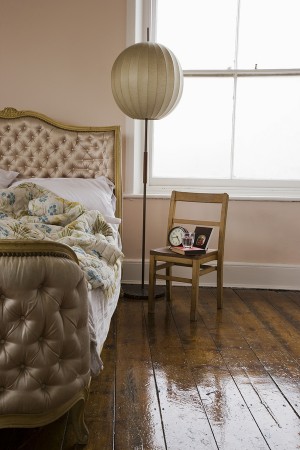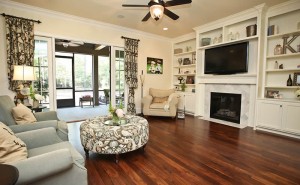 Some of the most common questions I am asked are regarding wood flooring. The many types, various suppliers and often confusing lingo associated with wood flooring can result in difficulty choosing the right option, as well as determining what will be best suited for a personal or professional environment. Hopefully the guide below can help answer some questions and clear up confusion for anyone in the market for new floors.
Some of the most common questions I am asked are regarding wood flooring. The many types, various suppliers and often confusing lingo associated with wood flooring can result in difficulty choosing the right option, as well as determining what will be best suited for a personal or professional environment. Hopefully the guide below can help answer some questions and clear up confusion for anyone in the market for new floors.
The following are brief descriptions of the types of wood flooring available, some of the pros and cons of each, and a few additional design details to consider when selecting the right project for your home or office.
Solid wood flooring is exactly what it sounds like—the same solid board all the way through each plank. A solid floor can be resanded and refinished several times. Although the frequency of necessary resanding will vary based on wear levels and taste, every twenty years is often recommended. Solid hardwoods are available in either unfinished (to be finished on-site) or prefinished, and both options have plenty of pros and cons. Unfinished hardwoods offer a greater selection of finish options and the ability to install the boards flush to one another, without the micro-beveled edges typically seen on prefinished boards. Prefinished floors offer a vapor-free and single session installation, versus the solvent smell and multi-step process of floors finished on-site.
Engineered wood flooring is a man-made flooring board that is made up of layers and layers of wood bonded together to create a strong core board, which is then topped with a solid hardwood laminated layer. The top layer, which can vary in thickness, is a thin sheet of actual wood. In some cases the product can endure one resanding, although typically this is not the case, meaning any major damage, scraping or scratching is often permanent. However, these products will often allow you to have a higher grade of wood without the expense of a solid wood product. In terms of both solid and engineered flooring, there are many wood species from which to choose. Each type of wood – oak, pine, ash, walnut, maple, and bamboo – has distinct properties such as the density (hardness), graining (natural pattern), and knotting (actual pits/holes in the wood). Each of these properties affects how well the floor repels scratching and denting, how it accepts stain finishes, and how it will impact the overall aesthetic design of the space.
 In addition to wood species, engineered and solid hardwoods are also classified into grades of wood. Whether you choose solid or engineered hardwood flooring, you’ll be able to choose from prime, select, natural or rustic grade wood. Each grade is determined based on the number of knots present as well as the color consistency. Generally speaking, smaller knots coordinate with a more uniform color, a higher grade of wood and of course a higher price (prime wood). As you go down the list to rustic grade, the number and size of knots increases as does the inconsistency of color. Also, the price decreases as you go down the list. Which option you choose will depend on the overall design concept of the space and your budget constraints.
In addition to wood species, engineered and solid hardwoods are also classified into grades of wood. Whether you choose solid or engineered hardwood flooring, you’ll be able to choose from prime, select, natural or rustic grade wood. Each grade is determined based on the number of knots present as well as the color consistency. Generally speaking, smaller knots coordinate with a more uniform color, a higher grade of wood and of course a higher price (prime wood). As you go down the list to rustic grade, the number and size of knots increases as does the inconsistency of color. Also, the price decreases as you go down the list. Which option you choose will depend on the overall design concept of the space and your budget constraints.
Laminate flooring is made up of an image that is sealed onto a backboard and made to look like real hardwood flooring. Since it is not made up of any actual hardwood products, it can endure no resanding and is generally not considered as durable as hardwood products.
Finishes & plank widths are also important aspects when selecting wood flooring. There are a multitude of finishes available to today’s consumers. Consider the overall design of the space as you select the color (ranging from almost white to rich, dark brown tones), sheen (from hardwearing lacquered finishes to prevent fading and sun damage, to natural, matte oiled finishes), and distressing (from a smooth, mirror-like finish to centuries-old-looking distressed). There are also many options available when selecting the plank (board) size for your flooring. Very thin planks are typically used in spaces with an older, more traditional feel, while the current trend is wide, and even varied length boards.
Regardless of where you land after navigating the many options available, well made and correctly installed wood floors will add warmth, character and value to any size, style or age interior as long as you call your space home and beyond.

